Wow! eBook: jQuery UI Cookbook - 6 new eBooks |  |
- jQuery UI Cookbook
- Getting Started with Eclipse Juno
- RubyMotion iOS Development Essentials
- Apache Flume: Distributed Log Collection for Hadoop
- Backbone.js Testing
- Getting Started with Microsoft Lync Server 2013
| Posted: 21 Nov 2013 12:18 AM PST
Book DescriptionjQuery UI is the quintessential framework for creating professional user interfaces. While jQuery core lays the foundation for interaction with the DOM and handling events, jQuery UI fills in the user interaction gap. This book will give you a huge productivity boost out of the box with jQuery UI, and help you understand the framework, inside and out. “jQuery UI Cookbook” provides you with practical recipes featuring in-depth coverage of every widget in the framework, including how to address limitations that impact your everyday development activities with these widgets. You’ll get a better idea of the big picture – how the framework is composed, how the widgets relate to one another, and how to build on those patterns. Be it a minor tweak on the visual design of a progress bar or a fundamental change in a widget to meet your needs, “jQuery UI Cookbook” covers scenarios both big and small. You can show reminders as tooltips, apply a variety of effects to the menu widget, and start interactions between the dialog widget and API data using deferred objects. These and many more interesting tasks are covered in this book, which can be done with smooth learning and great understanding. You will see how button widgets can fill the width of their containing element, making the layout more consistent. Tabs can be sorted and moved between widgets. You will learn how to do all these things within the context of the big picture, by finding out why the components work the way they do, making you well-versed in jQuery UI. What you will learn from this book
Approach Who this book is written for Book Details
Related Books
The post jQuery UI Cookbook appeared first on Wow! eBook. |
| Getting Started with Eclipse Juno Posted: 21 Nov 2013 12:14 AM PST
Book DescriptionIntegrated Development Environments (IDEs) such as Eclipse are examples of tools that help developers by automating an assortment of software development-related tasks. By reading this book you will learn how to get Eclipse to automate common development tasks, which will give you a boost of productivity. Getting Started with Eclipse Juno is targeted at any Java programmer interested in taking advantage of the benefits provided by a full-fledged IDE. This book will get the reader up to speed with Eclipse's powerful features to write, refactor, test, debug, and deploy Java applications. This book covers all you need to know to get up to speed in Eclipse Juno IDE. It is mainly tailored for Java beginners that want to make the jump from their text editors to a powerful IDE. However, seasoned Java developers not familiar with Eclipse will also find the hands-on tutorials in this book useful. The book starts off by showing how to perform the most basic activities related to implementing Java applications (creating and organizing Java projects, refactoring, and setting launch configurations), working up to more sophisticated topics as testing, web development, and GUI programming. This book covers managing a project using a version control system, testing and debugging an application, the concepts of advanced GUI programming, developing plugins and rich client applications, along with web development. What you will learn from this book
Approach Who this book is written for Book Details
Related Books
The post Getting Started with Eclipse Juno appeared first on Wow! eBook. |
| RubyMotion iOS Development Essentials Posted: 21 Nov 2013 12:09 AM PST
Book DescriptionRubyMotion is a revolutionary toolchain for iOS app development. With RubyMotion, you can quickly develop and test native iOS apps for the iPhone and iPad, combining the expressiveness and simplicity of Ruby with the power of the iOS SDK. “RubyMotion iOS Development Essentials” is a hands-on guide for developing iOS apps using RubyMotion. With RubyMotion, you can eliminate the complexity and confusion associated with the development of iOS applications using Objective-C. We'll begin from scratch. Starting by installing RubyMotion, we'll build ourselves up to developing an app that uses the various device capabilities iOS has to offer. What's more, we'll even learn how to launch your app on the App Store! We'll also learn to use iOS SDK classes to create application views. Discover how to use the camera, geolocation, gestures, and other device capabilities to create engaging, interactive apps. We'll develop stunning user interfaces faster with the XCode interface builder and make web apps by using WebView. We'll then augment applications with RubyMotion gems, doing more by writing less code and learn how to write test cases for RubyMotion projects. Finally, we'll understand the app submission process to push your app to Apple's App Store With “RubyMotion iOS Development Essentials”, we will learn how to create iOS apps with ease. At the end of each chapter we will have a tangible and running app, which utilizes the concepts we have learnt in that chapter. What you will learn from this book
Approach Who this book is for Book Details
Related Books
The post RubyMotion iOS Development Essentials appeared first on Wow! eBook. |
| Apache Flume: Distributed Log Collection for Hadoop Posted: 21 Nov 2013 12:07 AM PST
Book DescriptionApache Flume is a distributed, reliable, and available service for efficiently collecting, aggregating, and moving large amounts of log data. Its main goal is to deliver data from applications to Apache Hadoop’s HDFS. It has a simple and flexible architecture based on streaming data flows. It is robust and fault tolerant with many failover and recovery mechanisms. Apache Flume: Distributed Log Collection for Hadoop covers problems with HDFS and streaming data/logs, and how Flume can resolve these problems. This book explains the generalized architecture of Flume, which includes moving data to/from databases, NO-SQL-ish data stores, as well as optimizing performance. This book includes real-world scenarios on Flume implementation. Apache Flume: Distributed Log Collection for Hadoop starts with an architectural overview of Flume and then discusses each component in detail. It guides you through the complete installation process and compilation of Flume. It will give you a heads-up on how to use channels and channel selectors. For each architectural component (Sources, Channels, Sinks, Channel Processors, Sink Groups, and so on) the various implementations will be covered in detail along with configuration options. You can use it to customize Flume to your specific needs. There are pointers given on writing custom implementations as well that would help you learn and implement them. By the end, you should be able to construct a series of Flume agents to transport your streaming data and logs from your systems into Hadoop in near real time. What you will learn from this book
Approach Who this book is written for Book Details
Related Books
The post Apache Flume: Distributed Log Collection for Hadoop appeared first on Wow! eBook. |
| Posted: 21 Nov 2013 12:03 AM PST
Book DescriptionFrontend web applications are soaring in popularity and the Backbone.js library is leading this charge with a modular, lightweight approach for organizing JavaScript web applications. At the same time, testing client-side JavaScript and Backbone.js programs remains a difficult and tedious undertaking. Backbone.js Testing brings sensible practices and current techniques to the challenges of Backbone.js test development. The book introduces fundamental testing concepts, comprehensive test infrastructure design, and practical exercises to easily and systematically test modern JavaScript web applications. The book progresses from Mocha test suites and Chai assertions to advanced test mocks and stubs with Sinon.JS. The requisite libraries and utilities are introduced with in-depth examples and best practices for integration with your applications. The book guides you through the test planning and implementation processes for your application models, views, routers, and other Backbone.js components. Backbone.js Testing gives you the tools, examples, and assistance to test your Backbone.js web applications thoroughly, quickly, and with confidence. What you will learn from this book
Approach Who this book is written for Book Details
Related Books
The post Backbone.js Testing appeared first on Wow! eBook. |
| Getting Started with Microsoft Lync Server 2013 Posted: 21 Nov 2013 12:01 AM PST
Book DescriptionLync 2013 is a product that enables users to IM, and have audio and video conferences, including multi-party video. The mobile client permits the use of all the features in every device with an access-from-everywhere logic. The company's Active Directory users, SharePoint documents, and Exchange objects integrate with Lync to deliver most of the advanced features. Getting Started with Microsoft Lync Server 2013 will give you all the relevant information you need to enable voice features, select the best Lync client in different scenarios, make your Lync services available to the external users, empower the collaborative environment of Persistent Chat Server rooms, and to build an affordable unified communication system. Getting Started with Microsoft Lync Server 2013 will explore all the concepts you need to administer and plan a Lync 2013 environment in a short time, explaining the background mechanisms of the system.It begins with the deployment of a Lync frontend and SQL mirroring solution, including all the requirements and tips clearly laid out. It proceeds with the Front End pairing, mobility, and mediation server deployment with media bypass. It covers a core chapter about Enterprise Voice with a closing part on Persistent Chat and on clients with their characteristics. Getting Started with Microsoft Lync Server 2013 will give you all the relevant information you need to enable voice features, and will help to select the best Lync client in different scenarios. What you will learn from this book
Approach Who this book is written for Book Details
Related Books
The post Getting Started with Microsoft Lync Server 2013 appeared first on Wow! eBook. |
| You are subscribed to email updates from Wow! eBook To stop receiving these emails, you may unsubscribe now. | Email delivery powered by Google |
| Google Inc., 20 West Kinzie, Chicago IL USA 60610 | |
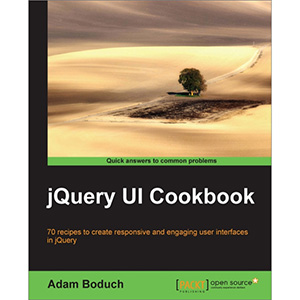
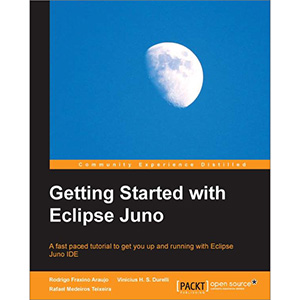
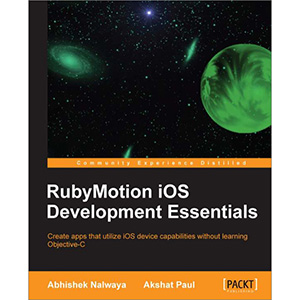
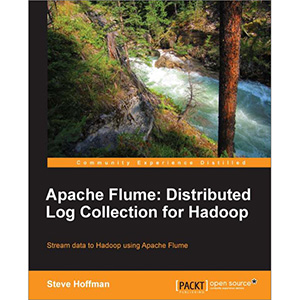
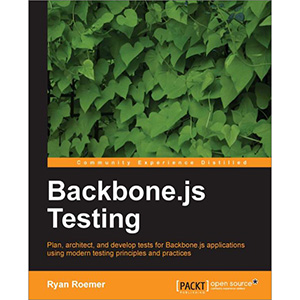
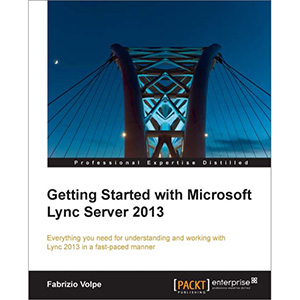
Tidak ada komentar:
Posting Komentar